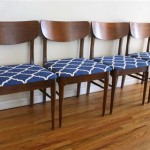Antique Arts & Crafts Furniture: A Legacy of Quality and Design
The Arts & Crafts movement, which flourished in the late 19th and early 20th centuries, was a reaction against the industrialization and mass production that characterized the Victorian era. This movement sought to revitalize traditional craftsmanship and elevate the status of the artisan. One of the movement's key expressions was in furniture design, leading to the creation of distinctive and enduring pieces that are now highly sought after by collectors and enthusiasts. Antique Arts & Crafts furniture embodies this philosophy, reflecting a commitment to high-quality materials, skilled craftsmanship, and aesthetic simplicity.
Key Principles of Arts & Crafts Furniture Design
Arts & Crafts furniture design was driven by a set of core principles that dictated its style and construction. These principles aimed to create furniture that was not only functional but also beautiful, reflecting a connection to nature and a respect for the materials used.
1. Natural Materials: Arts & Crafts furniture favored natural materials, such as oak, mahogany, and walnut, for their beauty, durability, and inherent warmth. These materials were often left unfinished or given a simple, natural finish to highlight their grain patterns and texture.
2. Traditional Craftsmanship: The movement emphasized skilled craftsmanship and hand-built construction. Furniture makers employed traditional joinery techniques, such as mortise and tenon joints, to create pieces that were strong and durable. The use of hand tools was common, and the craftsmanship was often evident in the meticulous details and subtle variations found in each piece.
3. Simple, Functional Design: Arts & Crafts furniture emphasized functionality and simplicity of form. The design avoided unnecessary ornamentation or complicated embellishments, focusing instead on creating furniture that was both practical and aesthetically pleasing. The furniture was often characterized by clean lines, strong geometric shapes, and a focus on the overall proportion and balance of the piece.
Notable Designers and Styles
Several prominent designers played a significant role in shaping the Arts & Crafts movement, each contributing their unique vision to the evolving aesthetic of the era. Some of the most notable figures include:
Charles Rennie Mackintosh: Known for his distinctive style that combined Arts & Crafts elements with influences from Japanese art and the Art Nouveau movement. His furniture designs often featured geometric shapes, clean lines, and a restrained use of ornamentation.
Gustav Stickley: An American designer who established the Craftsman Workshop, Stickley was a leading proponent of the Arts & Crafts movement in the United States. His furniture designs were known for their sturdy construction, simple lines, and use of natural materials like oak and maple.
Frank Lloyd Wright: A renowned architect whose work extended beyond buildings to include furniture design. Wright's furniture often incorporated organic forms, natural materials, and a focus on functionality. His designs blended seamlessly with his architectural creations, creating a cohesive and unified aesthetic.
The Enduring Appeal of Arts & Crafts Furniture
Antique Arts & Crafts furniture continues to hold a special appeal for collectors and enthusiasts today. Its timeless elegance, handcrafted quality, and connection to a bygone era make it a desirable and valuable possession. The furniture's enduring appeal can be attributed to several factors, including:
1. Quality and Durability: The use of high-quality materials and traditional construction techniques has resulted in furniture that has stood the test of time. Many Arts & Crafts pieces remain in excellent condition, testament to their enduring quality.
2. Timeless Design: The simple and functional aesthetic of Arts & Crafts furniture transcends trends. Its clean lines and focus on natural materials have made it remain relevant and stylish even in contemporary settings.
3. Historical Significance: As a product of a significant cultural movement, Arts & Crafts furniture holds historical value. It offers a window into the past, reflecting the values and sensibilities of a bygone era.
Antique Arts & Crafts furniture remains a testament to a design philosophy that emphasized quality, craftsmanship, and beauty. Its enduring popularity is a testament to the enduring appeal of these values, making it a sought-after and cherished part of design history.

Introducing Arts And Crafts Furniture Penderyn Antiques

A Quick Guide To Arts And Crafts Furniture Antique Collecting

Arts And Crafts Furniture Antiques World

Antique English Arts Crafts Oak Cabinet 1900s For Sale At Pamono

William Morris And The Arts Crafts Movement Revitalizing Beauty Craftsmanship

Antique Arts And Crafts Furniture Manderley Fine

Useful And Beautiful Arts Crafts Furniture At Cannon Hall Barnsley Museums Blogsite

What Is The Arts Crafts Furniture Philosophy Antique Trader

Arts And Crafts Period Furniture Page 3

Gustav Stickley Furniture Arts Crafts Mission Oak Reproductions And Antiques
See Also








